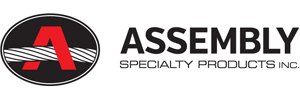Guide to Wire Rope
MENU
- Structural Wire Rope Applications
- Computer-Assisted Design and Detailing
- High Strength Structural Strand
- Custom Finishes
- Pre-stretching
- Striping
- Measuring Wire Rope
- Corrosion Protection
- End Terminations
- Attaching Sockets
- Proof loading
- Order Specifications
- Wire Rope Selection
- Rotation-Resistant Ropes
- Specialized Wire Rope
- Wire Rope Handling and Installation
- Standard Operating Practices
- Wire Rope Inspection
- Technical Info & Specifications
Typical Characteristics & Causes of Broken Wire Rope
Troubleshooting Broken Wires in Wire Rope
Tension Breaks
Wire break shows one end of broken wire coned, the other cupped. Necking down of the broken ends is typical of this type of break. Where tension breaks are found, the rope has been subjected to overloading, either for its original strength (new rope) or for its remaining strength in the case of a used rope. Tension breaks frequently are caused by the sudden application of a load to a slack rope, thereby setting up incalculable impact stresses.
Abrasion Breaks
Wire break shows broken ends worn to a knife-edge thinness. Abrasive wear obviously is concentrated at points where the rope contacts an abrasive medium, such as the grooves of sheaves and drums, or other objects with which the rope comes into contact. Unwarranted abrasive wear indicates improperly grooved sheaves and drums, incorrect fleet angle, or other localized abrasive conditions.
Fatigue Breaks
Wire breaks are usually transverse or square showing granular structure. Often these breaks will develop a shattered or jagged fracture, depending on the type of operation. Where fatigue breaks occur, the rope has been bent repeatedly around too small a radius. Whipping, vibration, slapping and torsional stresses also will cause fatigue. Fatigue breaks are accelerated by abrasion and nicking.
Corrosion Breaks
Easily noted by the wire's pitted surface, wire breaks usually show evidence of tension, abrasion and/or fatigue. Corrosion usually indicates improper lubrication. The extent of the damage to the interior of the rope is extremely difficult to determine; consequently, corrosion is one of the most dangerous causes of rope deterioration.
Cut or Shear
Wire will be pinched down and cut at broken ends, or will show evidence of a shear-like cut. This condition is evidence of mechanical abuse caused by agents outside the installation, or by something abnormal on the installation itself, such as a broken flange.
Troubleshooting Checklist
ABRASION
- Frozen sheaves or rollers
- Tight grooves
- Excessive fleet angle
- Oversized or undersized rope
- Corrugated sheave or drum
- Sheave overspin
- Rope jumping the sheave
- Poor spooling
- Misaligned sheaves
- Site contaminants
CORE PROTRUSION/SLIPPAGE
- Shock loading
- Poor seizing techniques
- Poor installation techniques
CORROSION
- Lack of lubrication
- Environmental damage, e.g. acidic fume exposure
- Improper storage
CRUSHING
- Poor installation techniques
- Crosswinding
- Poor spooling
- Incorrect wire rope construction
- Poor break-in procedure
- Excessive fleet angle
- Excessive rope length
DIAMETER REDUCTION
- Lack of lubrication (fiber core)
- Excessive abrasion
- Corrosion, internal and/or external Inner wire or core failure
FATIGUE
- Out of round sheaves
- Tight grooves
- Misaligned sheaves
- Undersized sheaves
- Worn bearings
- Vibration
- Slapping
- Whipping
- Reverse bends
HIGH STRANDING
- Poor seizing techniques
- Tight grooves
- Undersized sheaves
- Poor installation techniques
JUMPING THE SHEAVE
- Poor spooling
- Excessive rope length
- Broken flange
KINKING
- Poor unreeling procedures
- Poor installation techniques
- Undersized sheaves
LAY LENGTHENING/TIGHTENING
- Poor installation techniques
- Poor unreeling procedures
- Corrosion
- Core failure
LOOPED WIRES
- Poor installation techniques
- Undersized sheaves
UNBALANCED ROPE
- Oversized sheaves

